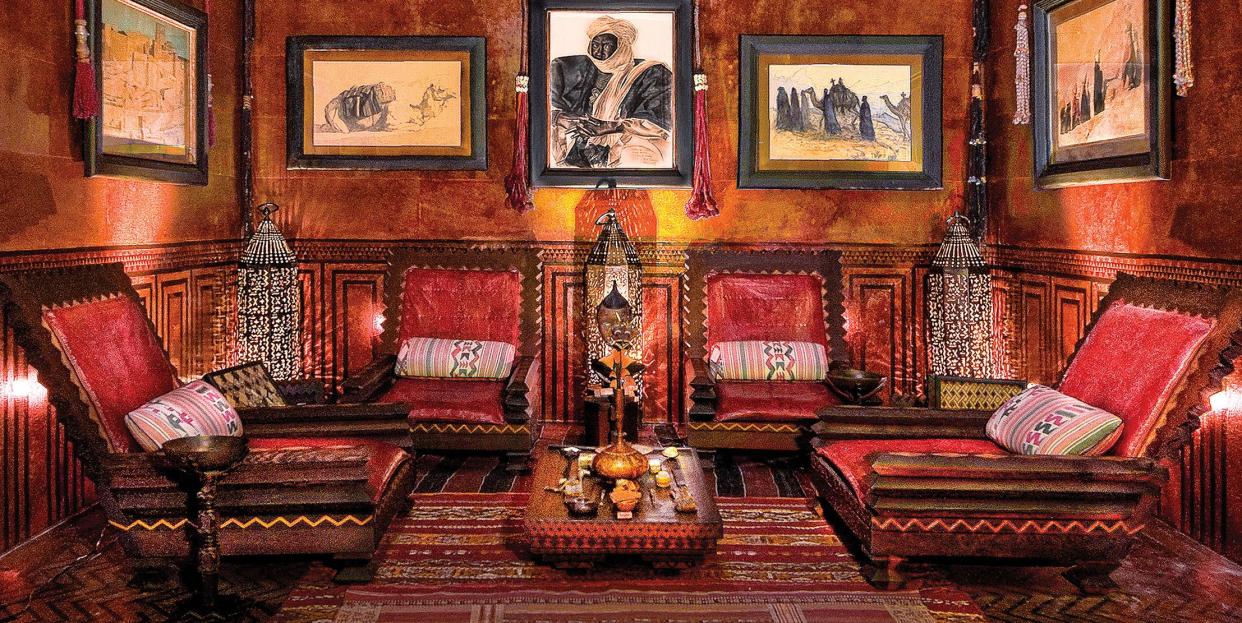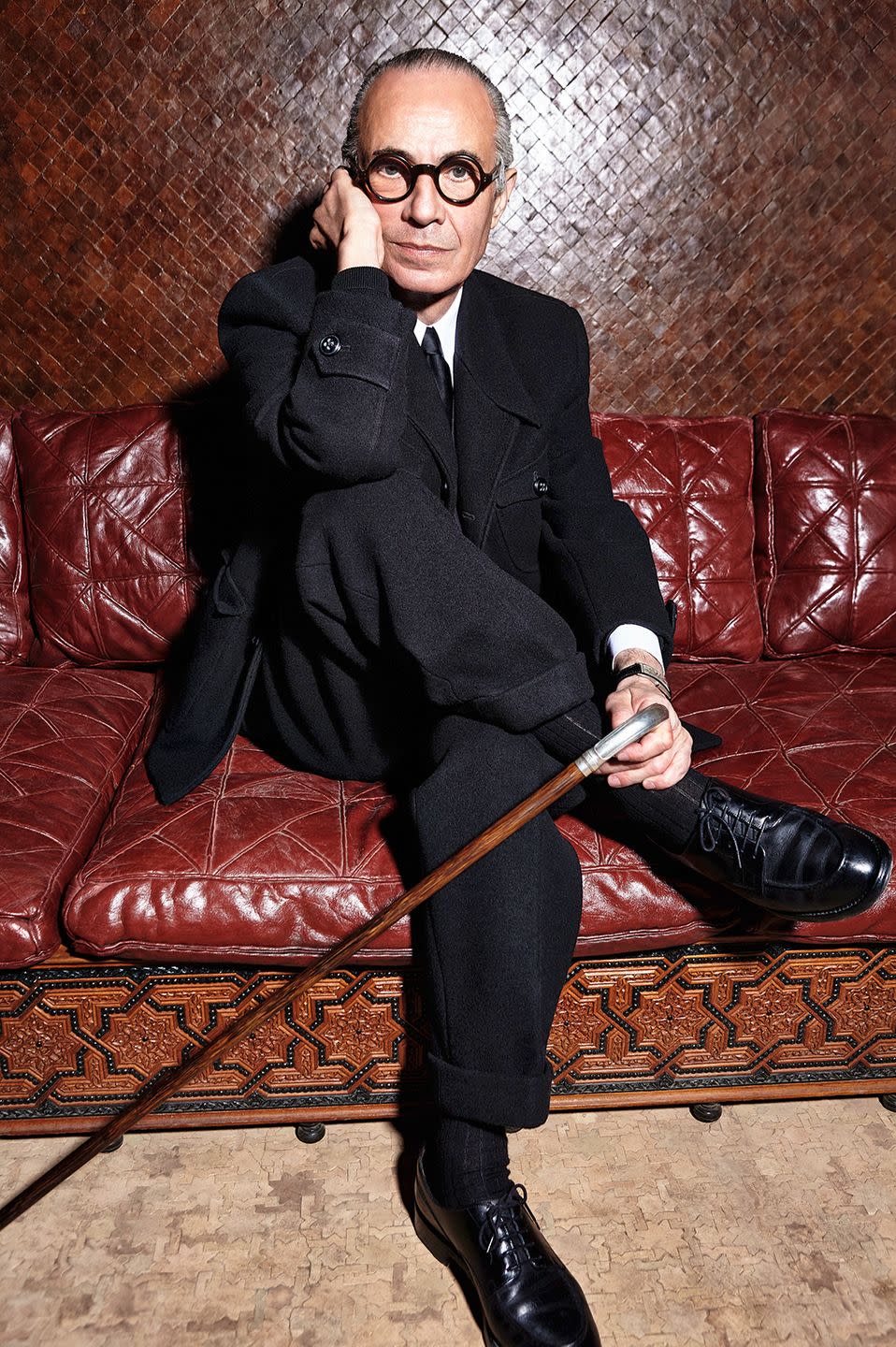Inside Serge Lutens's Perfumed Palace in Marrakech

Beauty is impossible to define, because it’s always changing, always surprising us,” says Serge Lutens. “It’s constant discovery—it takes you through hidden doors.” The iconic makeup artist, creative director, photographer, filmmaker, and perfumer knows of what he speaks, having collaborated with Richard Avedon and Diana Vreeland on some of the most arresting editorial images of the 1960s, masterminded the first ever designer makeup line for Christian Dior at the dawn of the ’70s, dreamed up the stunning campaigns that put Shiseido on the map in the ’80s, and effectively invented niche perfumery with his boutique in Paris’s Palais Royal, which has been a magnet for those in search of the world’s most exclusive and mythologized fragrances since it opened in 1992.

Yet there’s more to Lutens’s oeuvre than jewel-like lipsticks and connoisseur-bait scents. For the past 47 years, the notoriously reclusive and eccentric genius has also been quietly pouring untold millions into an opulent 32,000-square-foot monument to beauty and obsession hidden in plain sight behind an anonymous wall in the heart of Marrakech’s ancient medina.
Lutens bought his first riad, formerly a nobleman’s residence, in 1974. He went on to acquire 20 adjoining homes, which he has combined into a labyrinthine pleasure palace that houses his art collection (the biggest and most valuable display of Orientalist paintings in private hands), his Proust-filled library, and his perfume lab, equipped with drawers full of the planet’s rarest raw materials.
Every detail, from the door knockers to the drainage grates in the verdant courtyard, has been meticulously designed by Lutens himself, then executed by a cast of more than 1,000 Moroccan craftsmen. And because he’ll often have a room redone as soon as it’s finished, construction has been constant for nearly five decades.

“This house is like a book made of limestone and wood,” says the elegant 78-year-old, perched on a stool in a dimly lit den deep in the house’s innermost sanctum, its walls adorned with antique Berber jewelry. “It’s a book that contains an entire lifetime. I can’t tell you why it has consumed me; it’s more powerful than I am.”
The mind-bogglingly expansive space is a feast for the senses: Every vantage point is a dazzling interplay of light and shadow, with vaulted, intricately carved wooden ceilings that disappear into inscrutable darkness and lantern-studded stairways that descend into shadows. As you wind deeper, the more you smell traces of cedar, amber, and flowers, notes that define so many of Lutens’s most lauded perfumes, including Ambre Sultan (inspired by a bit of scented wax from the souk), the heady Fleurs d’Oranger, and the peppery rose Fille de Berlin—all of which have been issued in limited edition Moroccan-inspired bottles to mark the 20th anniversary of Lutens’s brand this spring.

Yves Saint Laurent once proclaimed that Marrakech opened his eyes to color. It introduced Lutens to the magic of scent. “I never would have become a perfumer if I hadn’t come to Morocco,” he says, and it’s easy to see parallels between his creative process and his approach to local real estate. “For me perfume is an organism. It’s living, it moves. It’s not set,” he says. “It’s different on every person depending on their pH, just as a lipstick is. Making a perfume is a matter of putting mosaic pieces together, linking together a succession of accords. There’s a lot of hesitation in the process. I don’t know where I’m going until I’ve arrived.”

When Morocco’s King Mohammed VI saw Lutens’s lavish digs, he asked if visits could be arranged for V-V-VIPs staying at his luxury hotel, the Royal Mansour. Now guided tours are available to guests ($720 for two people). Someday Lutens plans to literally give his keys to the kingdom, bequeathing his art- and perfume-filled architectural wonderland, which has been formally christened the Serge Lutens Foundation, to the country, securing its future as a museum that will join Laurent’s Jardin Majorelle as a jetset geotag hotspot.
That is, if it’s ever finished—Lutens just acquired several more surrounding riads to add to his compound. “I haven’t accomplished what I want to do,” he says, “not with my brand, nor with this project. You can never conclude all of your stories. Who invented this life business? We’re not given enough time. It’s really poorly done.”
This story appeared in the April 2020 issue of Town & Country. SUBSCRIBE NOW
You Might Also Like


